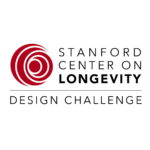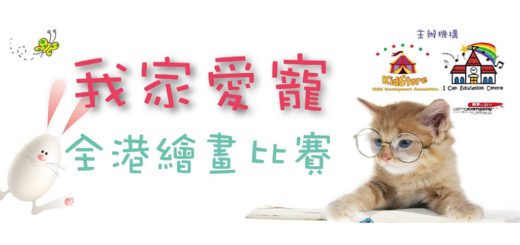2021 Stanford Longevity Design Challenge
The Stanford Center on Longevity Design Challenge offers cash prizes and free entrepreneur mentorship in a competition open to all university students around the world who want to design products and services which optimize long life for us all. This year’s challenge focuses on building longevity solutions inspired by cultural changes during the COVID-19 pandemic. $17,000 in cash prizes will be awarded, and finalists will receive paid travel to Stanford, where they will present their designs to renowned industry, academic, and government leaders.

“AFTER THE PANDEMIC: DESIGNING THE NEXT VERSION OF OUR WORLD”
The Stanford Center on Longevity Design Challenge is a global competition that encourages students to design products and services to improve well-being across the lifespan. In its eighth year, the Challenge is focused on ideas inspired by the cultural shift that has occurred during the COVID-19 pandemic that support long, healthy, and happy lives for everyone.
CHALLENGE GOALS:
- Create well-designed, practical solutions that improve well-being across the lifespan
- Encourage a new generation of students to become knowledgeable about issues associated with long lives
- Provide promising designers with a path to drive change in the world
The COVID-19 pandemic is bringing into sharper focus the cultural norms that guide us through life and is providing insights about what a new future might look like. The suddenness of this transformation is allowing us to examine daily practices, social norms, and institutions from perspectives that are rarely possible. For a short window of time, before new routines and practices replace familiar old ones, we will see with greater clarity how our lives might be improved, how current shifts could become enduring changes, what new norms might emerge, and how a new future might look.
This year, we are challenging students to design solutions for this new post-pandemic future, keeping in mind both how these solutions affect people throughout the life span, and how they can be designed in ways that are accessible to all. They should take into account what we are learning during the pandemic and how it is changing our lives.
How is the pandemic changing our lives?
In parallel to this Challenge, the Center on Longevity has launched an online project, called A New Map of Life – After the Pandemic, to gather expert opinions and perspectives about how our social and cultural norms might change as a result of the COVID-19 pandemic. These perspectives are available to designers as a source of inspiration and ideas.
Visit A New Map of Life – After the Pandemic
What kinds of designs are included?
Solutions for remote or virtual access will be included in the scope of the challenge, but we encourage participants to think more broadly. These products, programs, or services can be for work, school, healthcare, fitness, personal relationships, or any other aspect of life. Here are a few examples of questions raised by the pandemic that could be addressed:
- If remote work is to become more common, are there ways in which we can re-invigorate local community connections as people spend more time at home?
- How can more people of any age access quality education from anywhere?
- How can healthcare be administered equitably with limited resources?
- What are the best ways for different generations to connect when they live apart?
- How can we maintain our health and fitness without going to the gym?
- What have we learned from our change in activity about how we can reduce our impact on the environment, and how can we apply those lessons going forward?
DETAILS
CHALLENGE TIMELINE
The challenge is organized into two phases that are synchronized with the academic year.
Phase I: September – December 2020
Phase I is the open call portion of the challenge. During this time, teams will learn about the topic and create their solution concept. The Challenge organizing team will be available during this time for questions and to provide contacts for mentoring when possible. Solutions may be submitted at any time during this period, but no judging feedback will be available until January.
Judging Period: December 2020 – January 2021
During this period, our judging panel will select a small number of finalists. Finalists will be announced in mid-January.
Phase II: January 2021 – April 2021
During Phase II, finalists will be asked to further develop their idea and to prepare a presentation to be given at the Awards Ceremony at Stanford University in April of 2021. Mentors from corporate partners and industry experts will be available during this period. At the Awards, one team representative will present their idea to the judges who will then pick the First, Second and Third place winners.
KEY DATES
- Kick-off: September 14, 2020
- Phase I submissions due: December 10, 2020
- Finalists ( 5-8 teams ) announced: January 2021
- Finals: April 2021 ( exact date TBA )
AWARDS
Cash prizes: $10,000 ( 1st place ), $5,000 ( 2nd place ), $2,000 ( 3rd place ).
- Finalists receive mentorship and personalized coaching from industry experts and researchers.
- Finalists receive airfare and hotel reimbursement ( limited max value ) for a student to attend the Finals at Stanford University to present their idea to investors and potential customers.
- Finalists attend an entrepreneurial workshop at Stanford and learn how to create a business plan to take their concept into execution.
ELIGIBILITY
The challenge is open to teams of 2-5 students enrolled during the 2020-2021 academic year, attending any accredited university or college globally. Each team must have at least one full-time student and if the team is selected as a Finalist, only students may present.
INTELLECTUAL PROPERTY
Any intellectual property developed by a team during participation in the Design Challenge will remain the property of the individual design team, or the team members’ universities or employers, as applicable. The Stanford Center on Longevity and Challenge sponsors reserve the right to publicize designs following submission. Teams interested in intellectual property protection should take any steps necessary to protect patentable inventions, copyrighted work or other intellectual property prior to submission. Team involvement with any of the Challenge sponsors is strictly voluntary. Agreements between teams and sponsors are beyond the reach of Stanford Center on Longevity or Stanford University, and should be arranged separately between the teams and sponsors.
JUDGING CRITERIA
The Challenge will be judged by experts in design and technology including carefully selected academics with expertise on the topic; executives from technology and consumer goods firms; venture capitalists; and senior representatives from related mission-driven organizations.
Judging Criteria
- 40% Impact – will the design improve long life outcomes?
- 30% Originality – has this idea been seen before? Is there something similar to it on the market?
- 20% Feasibility – will the design work? Can it be produced at scale?
- 10% Affordability – teams must identify their target population for the design. Would the cost of the design at scale make it a viable product for that population?
A separate score reflecting alignment of the design to the topic will be added as a weight to the overall score. For example, if a design were to score 90% on the judging criteria above but only 50% on alignment, the overall score would be 45% ( .90 X .50 ).
SPONSORSHIP
LEVELS AND BENEFITS OF SPONSORSHIP
PLATINUM SPONSOR ( $50k + )
• Receives all benefits as per Gold Sponsor ( below )
• Receives online and offline branding and Platinum Sponsor recognition
• Acts as a strategic partner in creating the structure of the challenge
• Option for SCL presentation at Platinum Sponsor meeting or event
GOLD SPONSOR ( $20k )
• Receives all benefits as per Silver Sponsor ( below )
• Receives online and offline branding and Gold Sponsor recognition
• Has the opportunity to provide a judge for the competition
• Is offered access to all designs submitted in December 2016
• Is offered a corporate presence at the Awards ceremony in April 2017
SILVER SPONSOR ( $10k )
• Receives online and offline branding and Silver Sponsor recognition
• Has the opportunity to provide tailored content to educate teams through the challenge website
• Is offered the opportunity to mentor teams during the incubator period
For more information on sponsorship opportunities, please contact Ken Smith at designchallenge@stanford.edu.



